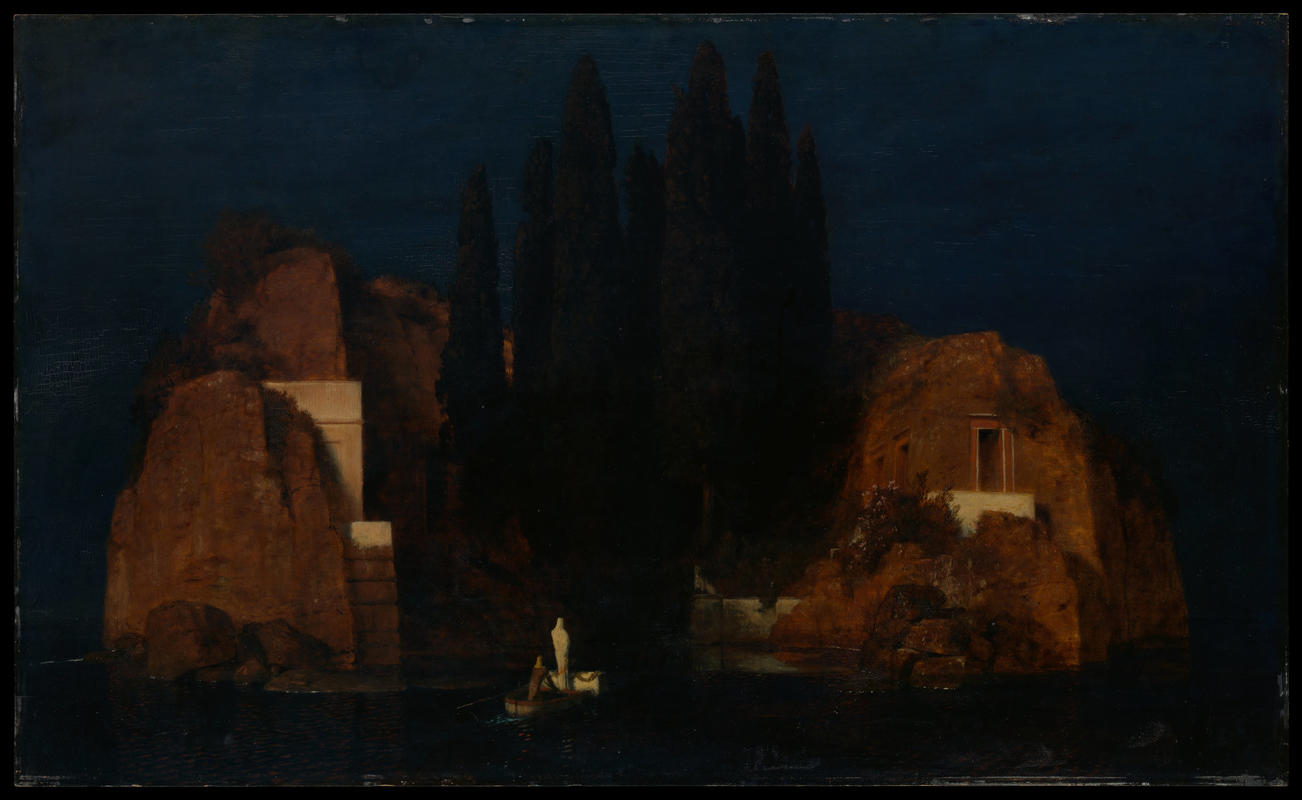More about Island of the Dead
- All
- Info
- Shop

Contributor
Pulpy, mass-disseminated horror may seem to be a modern invention, but Arnold Böcklin had a handle on it all the way back in the nineteenth century, with The Island of the Dead.
Böcklin was an early Symbolist painter, an art movement that, as the name suggests, was concerned with using the natural landscape or human figure as fuel for allegories and metaphors about subjective experiences. He described the particular subjective experience he wanted to capture with this piece as a desire to make “a painting for dreaming”— presumably, the dreams here are more on the subtly nightmarish side of the spectrum.
It was originally a commission for his friend Marie Berna, the future Countess of Oriola, who caught a glimpse of the work in progress and requested that the artist include a more explicit connection to death, to honor her recently deceased husband. In response, Böcklin added the boat with the shrouded figure. Symbolism rejected the idea that landscapes had to be necessarily idyllic, and this certainly demonstrates that: the water is calm, but the stillness is ominous, and the island with its trees and bluffs could be next to the dictionary definition for “looming.”
Böcklin’s dealer thought this painting had the makings of an iconic image, and asked him to paint four more versions. His dealer was correct, and either in spite of or because of its spookiness, the painting was a hit. Its symbolism (ha) resonated with countless people, including a few who it’s usually not a good thing for art to be associated with. Adolf Hitler owned one of the editions, and Sigmund Freud had a reproduction in his office.
The Island of the Dead, with its simple yet evocative composition, inspired many later artists as well. Sergei Rachmaninoff composed a symphony after it, and Salvador Dali made his own painting that references it in title. It appeared in kitschy mid-century horror movies to represent death (what else). In the seventies and eighties homages to the painting began to show up in science fiction and fantasy, when master of psychosexual horror symbolism H. R. Giger drew his own interpretation. The 2017 film Alien: Covenant referenced it further by making the villain’s garden identical to the island in a crucial shot halfway through the movie. It also appeared in Hotel Transylvania, showing that intertextuality with art doesn’t have to be limited to high cinema.
This painting points to an image of Böcklin as an artist preoccupied with doom-and-gloom, but only 8 years after the first version was commissioned, he painted The Isle of the Living, another classically-inspired vista, but far better lit and with nude figures cavorting in the water to replace the ferryman. Even with its cheery atmosphere, it’s a pretty forgettable painting (to which its relative lack of popularity attests). Not to get psychoanalytic, but there seems to be something primal and visceral about horror and how our brain processes it, and Böcklin was one of the artists who was able to successfully tap into that feeling.
Sources
- Coulthart, John. “A Picture to Dream Over.” Tor.com. Oct 28, 2011. https://www.tor.com/2011/10/28/a-picture-to-dream-over-the-isle-of-the-…
- Thomson, Richard. “Arcadia Contested.” In Van Gogh to Kandinsky: Symbolist Landscape in Europe 1880-1910, pp. 41-67. Thames & Hudson Inc., New York.
- Rapetti, Rodolphe. “Landscapes and Symbols.” In Van Gogh to Kandinsky: Symbolist Landscape in Europe 1880-1910, pp. 17-40. Thames & Hudson Inc., New York.












